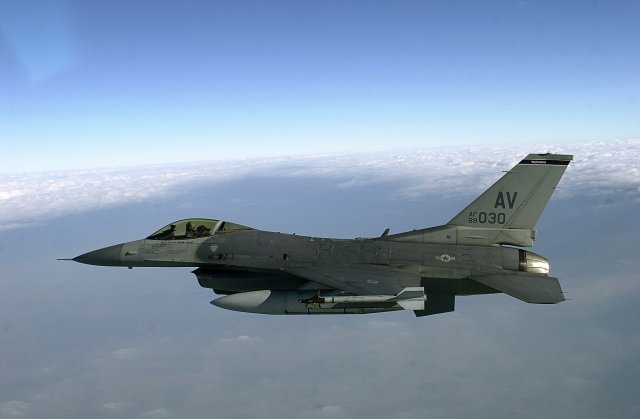When fighter jets age, their commercial and military value depreciates. They can either be consigned to the scrap heap, sold to nations with limited military budgets, placed in museums, or… get blown up in new and exciting ways.
The Defense Department has an entire programme devoted to blowing up old fighter jets–which are reconfigured into aerial targets–in mid-air. Repurposing old fighter jets into gigantic flying targets, it turns out, is very profitable for large aerospace firms like Boeing.
The Air Force’s QF-4 and QF-16 Aerial Target programmes convert retired F-4 Phantom and F-16 fighter jets into unmanned aircraft which can test missiles and radar systems. Many of the fighters used in the programme are blown up in mid-air; the Air Force expects to run out of F-4s to convert in 2013. Boeing announced that they won a $70 million engineering and manufacture contract to turn F-16s into unmanned and target-friendly QF-16s.
Although the F-4 family dates back to the 1960s, they are still used by militaries worldwide. However, the United States military only has a limited stock. According to an unclassified 2005 report on the use of aerial targets, American taxpayers spend approximately $220 million annually on aerial target programmes; more than 25% of the 700+ flights the airplanes make involve destruction by missile or alternate weapon systems.
For Boeing, repurposing disused fighter jets into unmanned drones is lucrative. The fact that their stock is constantly being hit by missiles is any business’ dream; replacement targets are always required by the military. Converted F-16 jets require total overhauls of their hardware, software, and individual components. Smaller military subcontractors who service Boeing also benefit from the assignment; specialty arms contractor BAE Systems is responsible for creating the software QA framework and remote control system that allows operators to remotely control the QF-16s.
Aerial targets have been around for a long time. The Air Force’s 82nd Aerial Target Squadron, which flies the QF-4s, has been testing aircraft since the 1970s. However, technology has only made it possible for unmanned targets to be launched over the past decade. For the military, this is a win-win proposition: new weapons systems can be tested in real-life environments without putting the lives of pilots at risk.
The unclassified report claims that the QF-16s will be used to test a variety of high-tech weapons systems and to examine tactics used by other millitaries–Air Force literature specifically mentions concerns about supersonic, anti-ship cruise missiles currently being used by Russia. In the long run, the Air Force is also planning to create a successor vehicle to the QF-16 that will be built from scratch as the perfect aerial target. Just this week, several Air Force cadets unveiled a model of a potential successor drone.
Production of the refurbished QF-16s will begin later this year in Jacksonville, Florida; the first QF-16s will be deployed in 2014.
Source: Fast Company

